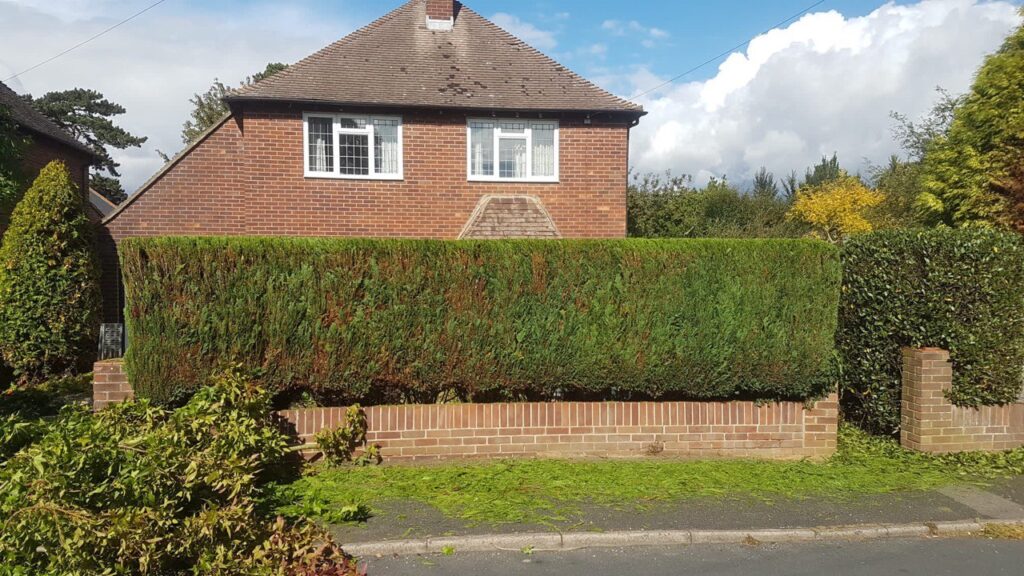Can Overgrown Hedges Cause Structural Damage to Walls or Fences?
Hedges are a popular choice for property boundaries, offering privacy, wind protection, and aesthetic appeal. However, if left unmaintained, overgrown hedges can pose serious risks to nearby walls and fences. Understanding these risks and knowing how to manage hedge growth effectively can prevent costly damage and ensure the longevity of your property structures.
How Overgrown Hedges Impact Structures
1. Root Expansion and Soil Displacement
Hedge roots naturally seek out moisture and nutrients, and in the process, they can grow underneath fences and walls. As roots expand, they may displace soil and cause shifts in the foundation of walls, leading to cracks or instability.
2. Excessive Weight Against Fences
When hedges grow too large, their weight can lean onto fences, causing panels to warp or even collapse. The constant pressure from branches can also damage fence posts, reducing their lifespan.
3. Moisture Retention and Rot
Dense, overgrown hedges can trap moisture against fences and walls, creating the perfect conditions for rot and mould, especially in wooden fences. Prolonged exposure to damp conditions can weaken structures and lead to expensive repairs.
4. Wind Damage
Tall, thick hedges can act as a wind barrier, but if not properly trimmed, they can cause turbulence that puts stress on fences. During storms, overgrown branches may snap and damage walls or fences upon impact.
5. Structural Cracks and Weakening
Roots growing beneath brick or concrete walls can lead to cracks and weakening of the structure over time. This is especially problematic if the hedge is planted too close to the wall without proper spacing considerations.
Preventative Measures for Hedge Growth
Regular Pruning
Frequent trimming prevents excessive growth and keeps the hedge within a manageable size. This helps reduce pressure on surrounding structures and minimises root expansion.
Proper Hedge Placement
When planting hedges, ensure they are positioned at a safe distance from walls and fences. This allows for root growth without affecting nearby structures.
Installing Root Barriers
For existing hedges, root barriers can be installed underground to prevent aggressive root systems from reaching and damaging foundations.
Checking for Early Signs of Damage
Inspecting fences and walls regularly for cracks, warping, or moisture damage can help identify problems before they become severe. Addressing minor issues early can prevent costly repairs.
Conclusion
Overgrown hedges can cause significant damage to walls and fences if not properly maintained. Root expansion, excess weight, moisture retention, and structural weakening are all risks associated with unchecked hedge growth. By implementing regular pruning, strategic planting, and structural inspections, property owners can prevent these issues and maintain the integrity of their boundaries.
For expert hedge trimming and tree surgery in Gamston, Nottingham, contact Gamston Tree Surgeons. Our team specialises in professional hedge maintenance to protect your property while enhancing its aesthetic appeal.
Call us on: 0115 697 1170
Click here to find out more about Gamston Tree Surgeons
Click here to complete our contact form and see how we can help with your tree needs.

